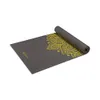Forget sit-ups — build a stronger core and boost your balance with this 8-minute bodyweight abs workout

Your core connects your upper and lower body, aids your balance, and helps promote blood flow around your body. But you don’t need weights or endless sit-ups to build this mid-body muscle, as you can use this eight-minute, three-move bodyweight abs workout instead.
Since you’ll spend a lot of time on the ground, you might find it more comfortable to roll out one of the best yoga mats, but it’s not essential for this short routine, making it ideal if you’re tight on time, can’t make it to the gym, or you’re traveling without access to loads of equipment.
The three-move session, designed by fitness trainer Todd McCullough, works your core without a sit-up in sight, helping keep your mid-section-focused workouts a bit more interesting. But it’s vital that you do each move with proper form to get the most from your training and avoid injury.
Fortunately, McCullough demonstrates each exercise, so you can practice your technique before you get started. And you want to ensure that you’re using the core muscles around your stomach, rather than arching your back for each movement to prevent lower back pain.
You’ll do 45 seconds of windshield wiper push-ups, split squat jumps for 30 seconds, and end the circuit with 45 seconds of bicycle crunches. McCullough recommends repeating the routine four times for an effective core-focused workout you can do in just eight minutes.
Watch Todd McCullough’s three-move core workout
A post shared by Todd McCullough (@tmacfitness)
A photo posted by on
The bicycle crunch is a classic abs exercise for a reason — it targets more of your abs than the standard crunch, looping in your obliques and lower abs. If you find that it causes pressure on your lower back, you can switch to the standing bicycle crunch and work the same core muscles.
You might notice that some people use core and abs interchangeably, but there are some differences. Your abdominal muscles, which include the rectus abdominis six-pack abs muscle, form part of your core, a section of mid-body muscle around your stomach.
Get instant access to breaking news, the hottest reviews, great deals and helpful tips.
So, while dedicated abs workouts do help strengthen your core, you need to target your whole core if you want to see benefits like improved stability, better posture, and enhanced everyday effects like lifting groceries and reaching high shelves with greater ease.
But to make the routine even more effective, the moves in McCullough’s workout are examples of compound exercises that work multiple muscles simultaneously. The windshield wiper push-up is a great example, as it helps strengthen your core, requires stability, and works your upper body.
However, the reason you can see results even from an eight-minute workout is the style of training; as many reps as possible (AMRAP). This is a lot like a HIIT workout, where you train in short intense bursts, but without rest between exercises.
It has similar benefits too, working your whole body, engaging your core, and increasing your heart rate, so you burn more energy than during a steady-paced routine. Plus, sustaining this high heart rate helps boost your metabolism, the amount of energy you burn throughout the day.
Why don't people enjoy sit-ups?
Sit-ups are an effective exercise for working your whole core, including your abs. There's a perception that the move will only strengthen your rectus abdominis (the six-packs muscle) but sit-ups actually offer a far more comprehensive workout.
The bodyweight move targets your obliques (the muscles that run along the side of your stomach) and the transverse abdominis, which are the core muscles that connect to your spine for improved stability and balance.
But if it's effective, why do so many people skip it? Mostly, because it's not very exciting. It's not a static move like the plank, so you are still moving, but the movement is very repetitive, especially if you're doing a lot of reps.
And as your muscles get fatigued and boredom sets in, it's harder to keep perfect form, which leads to accidentally arching of the lower back. In this position, you're not using your core, but relying on your back, which can lead to injury.
So, because the move can get a bit dull, especially if you train several times a week, and it's easily to accidentally let your form slide, many people switch to alternative core exercises, like those in McCullough's routine.
Personally, I also find it lever-style movement quite uncomfortable around my pelvis, leading to a more on/off type of training, so I find it difficult to lower back with control and using more core less, which undermines the point of the exercise.
More from Tom’s Guide
- Fitness instructor says these 3 beginner-friendly moves are the best way to build full-body muscle
- I did 90 dolphin push-ups every day for one week — here’s what happened
- Forget sit-ups — build a stronger core and improve your posture with this 15-minute standing abs workout

James is Tom's Guide's Buying Guide Editor, overseeing the site's buying advice. He was previously Fitness Editor, covering strength training workouts, cardio exercise, and accessible ways to improve your health and wellbeing.
His first job at as a sales assistant in a department store, and this is where James learned how important it is to help people make purchasing decisions that are right for their needs, whether that's a fountain pen to give as a gift or a new fridge for their kitchen.
James is an advocate for sustainability and reparability, and focuses his reviews and advice through that lens to offer objective insights as to whether a specific product or service will be right for your needs.









